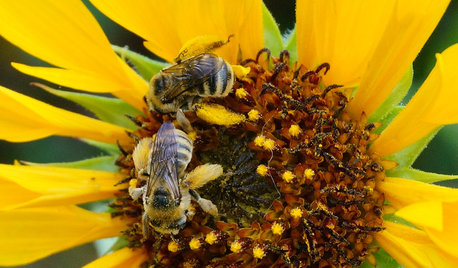Assassins
florah
15 years ago
Related Stories

PRODUCT PICKSGuest Picks: The Well-Stocked Starter Kitchen
We’ve got all the kitchen basics and tableware you need (or that recent grad needs) to make cooking a joy
Full Story
HOME TECHThe Inevitable Future of Drones Around Your Home
As Google joins the push for airborne deliveries, it seems only a matter of time before neighborhoods are buzzing with drones. Is that OK?
Full Story
DECORATING GUIDES10 Tree-Hugging Interiors That Work Around Nature
Bursting up through the floor, planted in an indoor patio or potted in any room you choose, trees bring an elegance that's organic
Full Story
EARTH DAY12 Entertaining ‘Bee-haviors’ of Native Bees
The parade of pollinator antics is another reason to create a garden that nurtures native bees
Full Story
GARDENING GUIDESGreat Design Plant: Butterfly Milkweed, a Beacon in the Prairie
Vivacious orange flowers for you, nectar for the butterflies and bees. Asclepias tuberosa is worth planting for more reasons than one
Full Story
LIFEThe Beautiful Thing About Dad's Chair
My father had his own spot in the house. His father had his own spot. Now I have mine
Full Story
GREAT DESIGNERSThe Controversial House ‘That Changed the Way We Live’
A rivalry with Le Corbusier nearly ruined Irish designer Eileen Gray’s career, but 2 new films celebrate her as ‘the mother of modernism’
Full Story
GARDENING FOR BUTTERFLIESGarden for Wildlife to Reap Rich Rewards
When you plant with animals and insects in mind, you make gardening easier, the planet healthier and yourself more present
Full Story
GARDENING GUIDES8 New Ways to Garden This Year
A successful garden means knowing the plants, the wildlife and yourself
Full Story
GARDENING GUIDES4 Ways Gardens Can Go Beyond Aesthetic Beauty
Our landscapes can play an even more meaningful role if we rethink their purpose
Full Story








rascy
florahOriginal Author
Related Professionals
Summit Landscape Architects & Landscape Designers · Arlington Landscape Contractors · Medford Landscape Contractors · Surprise Landscape Contractors · Fort Myers Landscape Contractors · Inglewood Landscape Contractors · Northbridge Landscape Contractors · Oviedo Landscape Contractors · Canton Decks, Patios & Outdoor Enclosures · Freehold Decks, Patios & Outdoor Enclosures · Green Bay Decks, Patios & Outdoor Enclosures · Watauga Decks, Patios & Outdoor Enclosures · Mitchellville Siding & Exteriors · Southampton Siding & Exteriors · Yakima Siding & Exteriorssuegrew
solstice98
manature
manature
suegrew
manature
rascy
manature
MPH101
rascy
rascy
manature
katkin_gw
manature
tampaart
tetrazygia
suegrew
manature
minibim
manature
rascy
rascy
manature
suegrew
rascy
manature
rascy